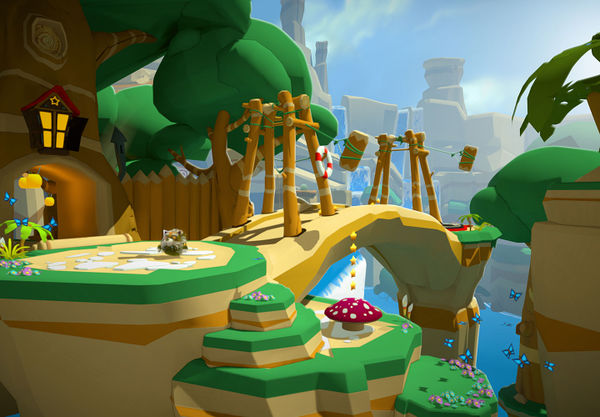Difference between revisions of "Virtual reality"
EricChadwick (Talk | contribs) (removing class="wikitable") |
EricChadwick (Talk | contribs) (→Links: Virtual Reality Art Resources Thread) |
||
| Line 31: | Line 31: | ||
== Links == | == Links == | ||
| + | * [https://polycount.com/discussion/149813/virtual-reality-art-resources-thread Virtual Reality Art Resources Thread] on the Polycount Forum | ||
* [http://www.youtube.com/watch?v=NbiioTWaY2E Oculus Connect: Learning from Lucky's Tale] presentation by Design Director Dan Hurd and CEO Paul Bettner from Playful at the Oculus Connect developer conference | * [http://www.youtube.com/watch?v=NbiioTWaY2E Oculus Connect: Learning from Lucky's Tale] presentation by Design Director Dan Hurd and CEO Paul Bettner from Playful at the Oculus Connect developer conference | ||
* [http://www.pixelatedramblings.com/2014/12/the-quest-for-comfortable-vr.html The quest for comfortable VR] by [http://www.pixelatedramblings.com Michael Schenck] | * [http://www.pixelatedramblings.com/2014/12/the-quest-for-comfortable-vr.html The quest for comfortable VR] by [http://www.pixelatedramblings.com Michael Schenck] | ||
Latest revision as of 07:50, 8 August 2018
Virtual reality or VR for short usually refers to stereoscopic 3D real-time rendering.
Art Rules for VR Environments
| Juan "monster" Martinez posted this in the Polycount Forum thread Art Rules for VR environments? |
At Playful we are building a VR game with Oculus. Before we ended up with our current art style we tried a slew of different art styles. I've developed on DK1, HDKit, Chrystal Cove and DK2 ( and others )
The biggest challenges are mipping and aliasing. The screen is just inches from your eyes and each camera alias and mips slightly differently. This causes a lot of discomfort. You also lose a lot of resolution with the camera shader used to send a distorted image through the lens.
(Anti-Alias is the smoothing of polygonal edges. Mipmapping is the smoothing of textures as the angle / distance increase from the render camera.)
These are the rules we came up with so far.
- Use Chromatic Aberration to correct color bleeding from the lenses.
- Don't use high frequency detail or noise in textures. Even with mip mapping enabled it just turns into swimming pixels.
- 3D geometry "feels" way better than normal maps.
- Specularity instantly give a lot of interest in VR.
- We used a lot of angular and organic shapes because vertical and horizontal lines would align to the screen pixels and alias very badly.
- We rendered the final image at 2592x1458 then down scaled to 1920x1080 to get better anti-aliasing.
- In Unity we used the 8x Multi-Sampling. (Along with the upscaling.)
- Skyboxes require a special shader to display the same on both eyes/cameras.
- We are working on a shader that fades out texture detail at a distance to prevent mipping / swimming textures.
- You need to maintain 76 FPS for low persistence to activate on DK2. This is a challenge because everything is rendered twice, once for each eye.
I'm sure I'm forgetting lots of stuff right now. If I remember anything pertinent I'll update.

Links
- Virtual Reality Art Resources Thread on the Polycount Forum
- Oculus Connect: Learning from Lucky's Tale presentation by Design Director Dan Hurd and CEO Paul Bettner from Playful at the Oculus Connect developer conference
- The quest for comfortable VR by Michael Schenck
- Designing for virtual reality by Xin Xin